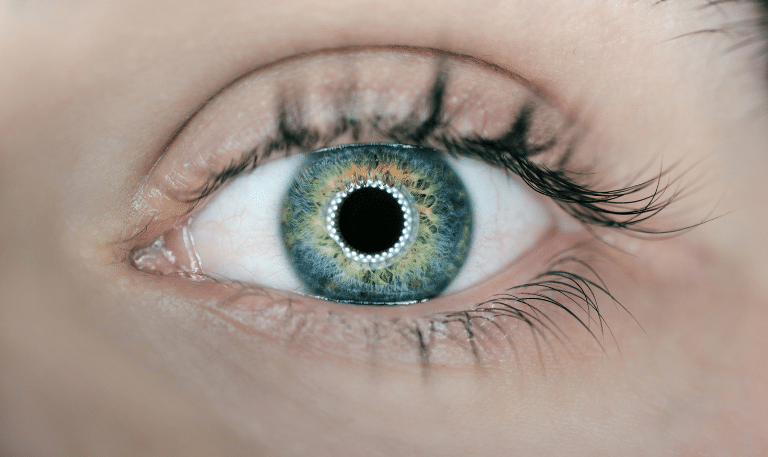2019’s top trends in biometric security technology
Rapid innovation in biometric technology means trends are changing fast, making the authentication process more secure and convenient than ever.
These trends are driven by the need for better ways of identifying people. After all, it’s easy to lose or forget your key card or password, but harder to forget your fingerprint or eyeball!
Biometric traits are also harder to steal or hack, making them a more secure identification tool. Here are some innovations in biometric security technology that are making their mark in the sector.
Mobile biometric technology
With everything from accounting to entertainment going mobile, biometrics has joined the trend. Because the need for accurate and secure identification doesn’t only happen in an office environment, biometric functionality has had to go mobile.
Biometric authentication can be achieved on a mobile device that either has inbuilt biometric sensors, or by attaching portable biometric-sensing hardware to the device through a USB cable or Wi-Fi connection.
Both governments and the corporate sector have taken up on-the-go biometric technology. It has been used in law enforcement, border protection, and even identification of air crash victims. In healthcare, it has the potential to save lives, as mobile kits can be used to authenticate individual health records at clinics in remote areas.
Cloud-based biometric solutions
When integrated with mobile biometric technology, cloud-based solutions can make the identification process even faster. Sending information to the cloud has several advantages. It is cost-effective, as users don’t need to spend as much on hardware, applications or infrastructure, thereby reducing both initial and ongoing costs. It can more easily be down- or up-scaled to meet user requirements.
Cloud-based solutions tend to be faster than traditional biometric technology due to reduced system complexity. They also allow multiple users to access the data at any point in time.
Multi-modal biometric authentication systems
Cloud-based systems also allow for the use of multi-modal authentication. Rather than using input from a single biometric characteristic, multi-modal biometric systems use input from single or multiple biometric devices for measurement of two or more different characteristics. These could include a fingerprint, palm print, vein from the palm or finger, iris scan, DNA sample, and voice or facial recognition.
Using two or more biometric markers enhances identification accuracy and helps to overcome the loopholes of traditional fingerprint technology (like dummy fingers overlaid with copied fingerprints). An example is a dual system that identifies a person by their fingerprint plus the unique blood vessel pattern underneath the skin.
Multi-modal authentication is also an effective solution in cases where one characteristic might have issues, for example, in labourers with damaged fingertips.
This technology has potential applications for corporate banking, vehicle security, credit card authentication and tracking of employee attendance, or anywhere that requires ultra-secure identification.
Facial and voice recognition
Another new development is 3D face recognition. It uses sensors to identify characteristics of a person’s face shape, like the contours of the eye sockets, nose, cheeks and chin. This technology makes it possible for governments and intelligence agencies to build massive databases storing face-recognition data, and can also be used in conjunction with mobile technology for banking and other applications.
Voice printing is another growing area. The characteristics of each person’s mouth and throat mean that there are measurable qualities of a human voice that are unique to each individual. These characteristics can be recorded as a voiceprint and measured with a mathematical formula, and then used in voice ID systems for user authentication.
Voice prints can be stored in a database. They have potential for application in situations like kidnappings, where a kidnapper makes a ransom demand call and their identity is then determined from a voice print.
Biometric single sign-on (SSO)
One popular area of debate is whether biometrics will replace passwords. Unlike passwords, biometric characteristics are unique and can’t be forgotten, lost or shared.
This security advantage is seeing many companies choose biometric SSO over traditional passwords. Biometrics have the additional advantage of lower password management costs. They are also convenient in situations where people have to remember multiple passwords or change them frequently.
To stay on top of the latest trends in the security industry, visit Australia’s premier annual Security Exhibition and Conference.
The Security Exhibition and Conference has been the largest and most established commercial event in the Australian security industry for over three decades.
It provides an invaluable opportunity to connect with the the entire supply chain of manufacturers, distributors, security professionals and end users, creating unrivalled business opportunities.
Come along and network with others in the industry, learn from top keynote speakers, and see exhibitions and displays.
Australia’s premier Security Exhibition and Conference 2019 will be held at the ICC Sydney, Darling Harbour from 24-26 July. Contact us today about being involved.
About the Author: Sophia Auld
Sophia Auld is a freelance writer and editor whose work has featured in national and international magazines, newspapers and online sites. Sophia does feature writing, copywriting and corporate writing, specialising in the health and medical space. She also writes about technology, business, lifestyle and travel. Find out more at sophiaauld.com.
-
Bring your security needs into focus
- Register

